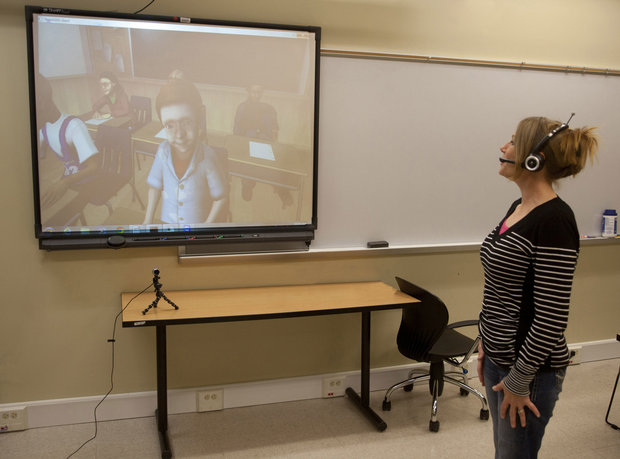Virtual Reality, more commonly referred to as VR, is a technology that has been developed over several years. VR was invented in a basic form in 1957 by Morton Heilig and has recently been dramatically expanded as companies have begun to invest heavily in it. VR provides an immersive experience in which the user is presented with a video which replaces the world around them. VR has become effective as it is immersive and uses a ‘style of presentation [which] mimics the way that we, as humans, have learned to interact with our physical world’ (Byrne, 1993, p.1). As it is a natural way of interaction, it takes little adjusting for someone to become immersed in the VR they are using. This is echoed by Kolb, Fielding, Gardner and Slavin who suggest that individuals learn better when information is presented in their preferred learning style and in a way that comes more naturally to them (1984; 1985; 2000; 1998). This makes VR an asset to a classroom rather than a hindrance as it allows the user to easily enter in to a different world in seconds. VR, by being immersive, helps to remove distraction and has been suggested to be helpful for children who require assisted learning. More information about VR and assisted learning can be found here.
Virtual Reality has developed quickly over a short period of time due to the amount of investment in it. However, we must look at this spending and determine if it was correct to do so. It has been suggested that VR helps remove barriers in education. For example, Bian suggests that VR helps to solve the issue of ‘poor interaction of traditional teaching methods’ by providing a new way of teaching through using the children’s natural senses (2016, p.25). This shows that VR can have massive advantages in a classroom as it provides the teacher with new scope and a new way to teach their lessons. This will inevitably bring the children’s attention to the lesson as it is a new interesting way for them to learn. Cao determines that traditional methods of learning have become boring for students and that VR has enabled to change this (2016, p.27). This could be potentially ground breaking in the teaching industry as it enables a newer style of teaching. However, this idea of escapism can be achieved by going to places the VR has videos of. VR offers the opportunity to use this escapism at a fraction of the price.

VR headsets are now available from only £3 with applications to use on them being available at a cost or even for free. For example, Google Cardboard is around the £3 mark and can be used simply with the Google Maps Street View application. This demonstrates a cost friendly way to use VR in a classroom with all apps being user friendly. Google offer an application for school’s named Google Expeditions. This application is for use in schools and allows the teacher to guide their children on virtual tours of various landmarks such as the pyramids of Giza or Rio De Janeiro. Takala et al refer to this as a ‘consumer VR product’ as it is purposely made to generate an income from schools by selling the devices (2016, p.288). This shows a failing of Google Expeditions as it has not been created to further the field of VR but rather for commercial reasons. This is backed up by Takala et al who suggests that ‘consumer VR is a fast-growing industry’ with VR hardware and software becoming more readily and affordable which is beginning to have ‘implications for VR education’ (2016, p.288). However, it is imperative to note that the application of Google Expeditions is completely free and the programs on there are to. Google are making their money from the sale of hardware rather than software.
In the video below, I provide a short demonstration of Google Expeditions and it’s capabilities:

